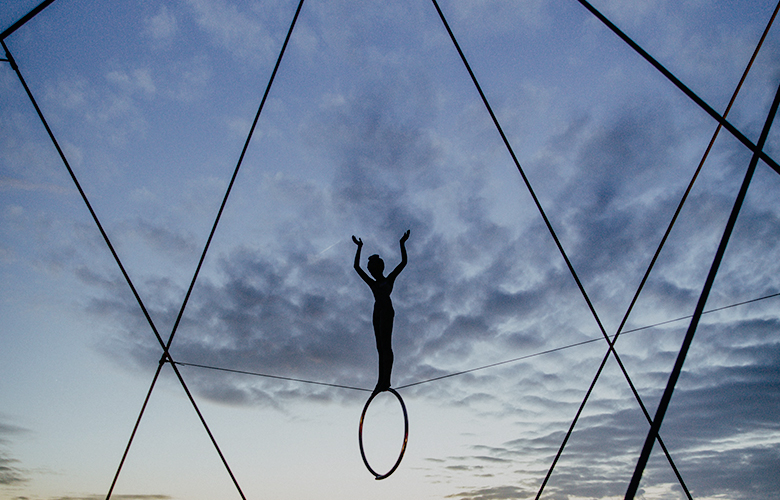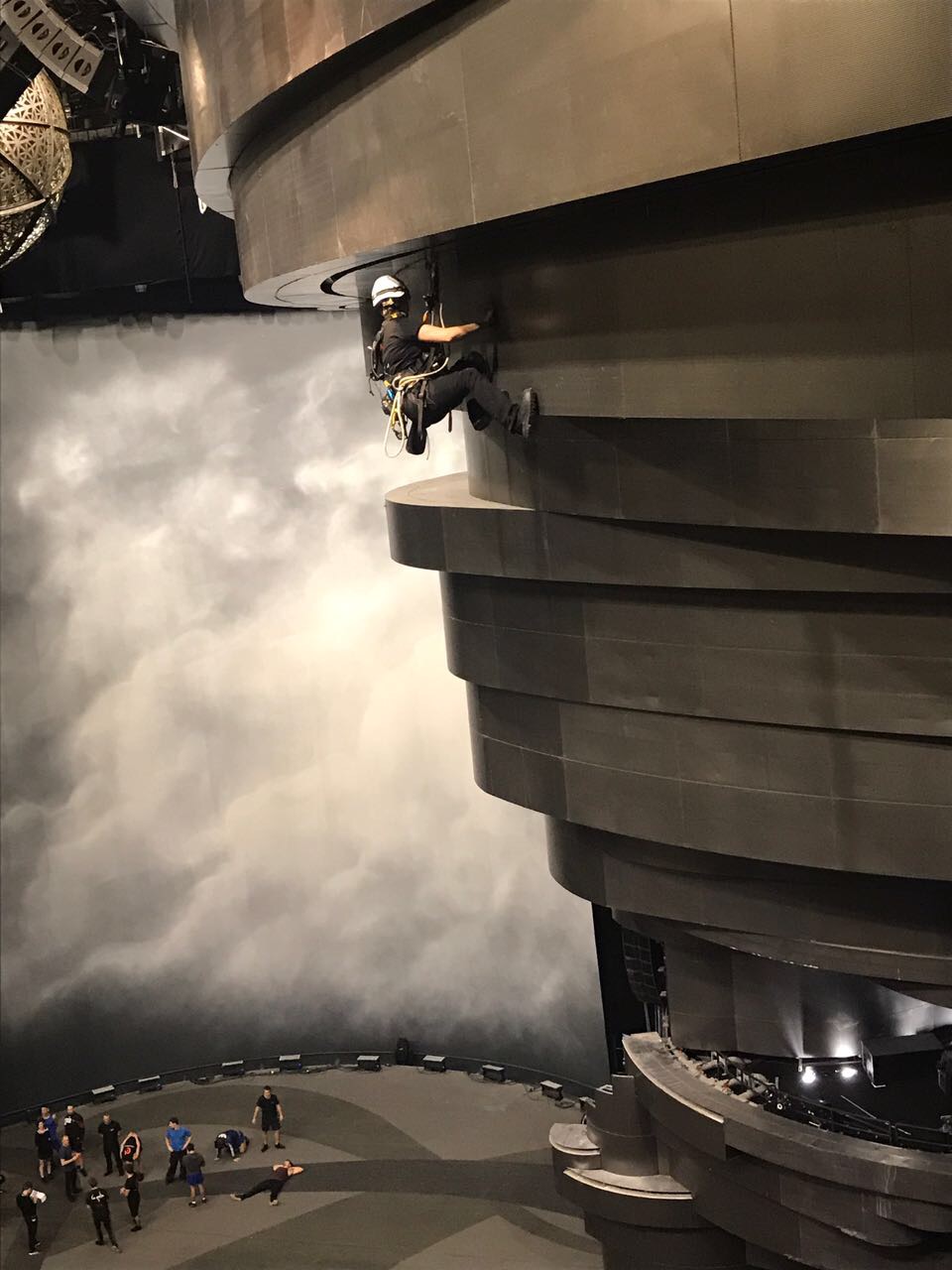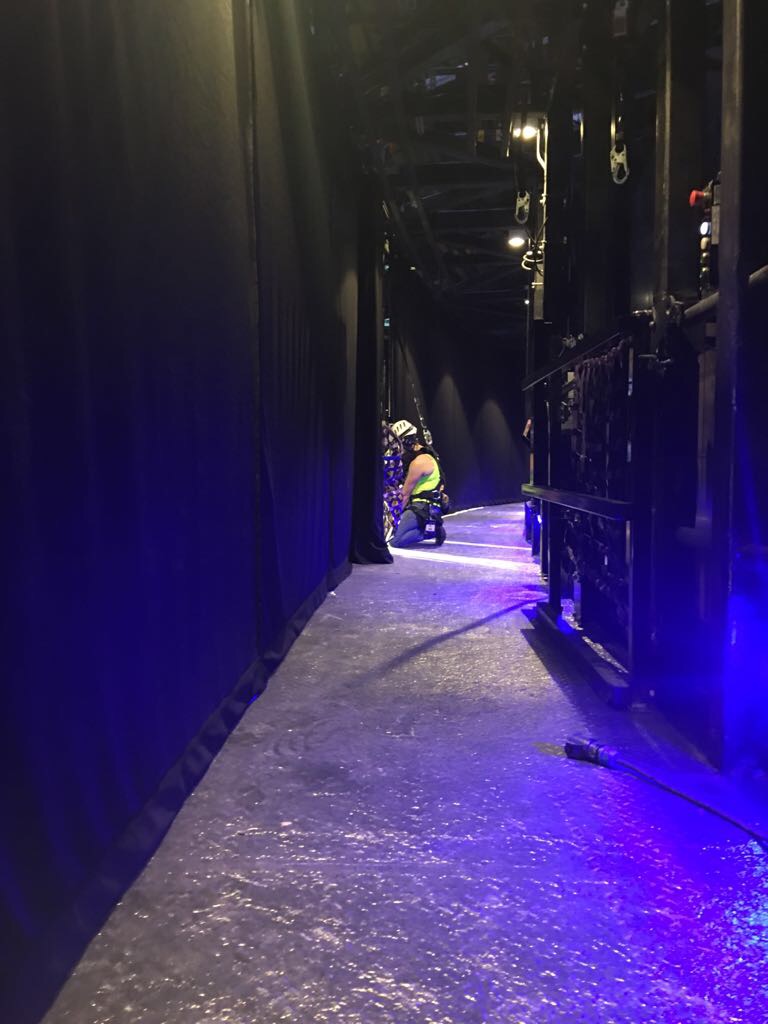
Finally, the conclusion of my ranting opinions on making a successful performance and creation.
Part 3 – Validations to Shows: Where we confirm that everyone knows what’s up and finalize it into something that everyone can do safely, confidently and repeatedly.
This is a specific type of rehearsal that is set aside in particular to confirm that an individual and/or piece of equipment can appropriately perform a defined task. It can be something as simple as making sure a changed cable is signed off on or a full sequence or show to add in a new performer or operator. This must be completed in a controlled state before going into shows. You can’t skip this. This procedure allows us to document and positively affirm that everything is correct ahead of time and besides being best practice, if you’ve ever gone through an audit, you know how important these types of legalities are. Here you can spot any discrepancies to be amended and sign off on what works. Validations not only provide crucial documentation for the continued success and longevity of a show, but arguably more importantly instill a sense of trust and respect in colleagues.

You should always be able to bank on your back-ups. Ideally, these are discussions and scenarios that all departments are involved in and have agreed upon as to how they will amend their actions to accommodate the new plan as rehearsed. The thing is, we know we can’t predict everything. It is in those situations where we need to trust each other’s professional judgement on how and when to call a STOP or delay in the movement, whether the situation is able to carry on and it is merely a cosmetic concern or a safety concern and warrants a show cancellation. In all of these instances, having briefing after any new instances can greatly help us to mitigate future issues.
Huzzah!!! We made it. Everything is sorted, we can sit back with our cappuccino and relax in the glory of our masterful creation, right? But, no. We’re still flying people and moving machinery that can seriously injure someone if things were somehow to go sideways. Power outages, equipment malfunction, ill performer, ill technicians, etc. I’ve seen all of these. This means that the Rigger (and honestly, everyone else) must be constantly aware of what is moving where and whether or not that object is in fact ‘clear to fly’ or needs to be delayed until all the boxes are checked to ensure a smooth deployment and flight. This will be a bit different with every object, but some of the basics are:
[True Story: When you’re checking your performer before a flight, check that they feel comfortable and safe obviously, but also that their costume is fully attached and that one awkward flip won’t result in a headpiece flopping into the audience. Wardrobe and Rigging need to be buddies].
OK, now we’re ready. We gave all our necessary clears and handed it off to the automation. But before we prematurely congratulate ourselves, we need to be totally observant until that object has fully completed its flight and is in its safe landing zone, cue complete, detached and free to run away. We must anticipate and be aware of the fact that at any moment, things could go down. Maybe that object or another one has stopped which could delay the rest of the flight. Maybe another performer nearby is in the wrong spot and will for sure end up in your way. Maybe your performer has decided that they are gonna have some fun and switch up the choreography a bit which might either put them in a different location or lead you to believe that they have an injury. So we watch and listen to everything. There is a show that happens on stage and off, and any deviation from that could directly affect someone’s safety. So try to memorize the show call, and if you need to say something, just do your best to do it at an opportune time on the right channel, though this can be a challenge for even the most experienced as often there are multiple channels live at once.

“But the Show must go on”, we’ve all learned that, but there is no point in continuing a show that will damage a person or equipment, or otherwise ruin the integrity of the product. I have seen technicians struggle with the knowledge that they have the authority to stop an operation. Train them how to speak on comms and how to use E-Stops all you want, but unless they are confident in themselves and the knowledge that they have, they will always hesitate. Remind everyone from the intern to the General Manager that they need to be confident in the decisions they make. Likewise, we, the rest of the company, need to understand that decisions made in the past are done and can only be learned from, not dwelt on.
So rehearse your calls. It’s not just for stage managers. I remember, years ago working on a cruise ship where all sorts of things were moving on timecode while that production manager valiantly held on to a master deadman switch, and the best way to communicate was to specify the command, location and object. “Hold the Stage Right Nets”. I would actually practice giving commands in the mirror on my off time. Did I feel ridiculous doing it? Yes, talking to yourself in a mirror isn’t necessarily normal, or maybe it is, I need guidance on this… Regardless, that repetition enabled me to act instead of just react when I actually needed it. I would go over scenarios in my head of all the messed up stuff that could happen and practice how to communicate that. I would actively anticipate the potential for something to go wrong, so that if it did, it wasn’t so much of a surprise. I found that the more obscure situations I could think up and practice through, made the real world a much less stressful place to be. I still do this actually, it’s a great way to combat monotony and complacency.
Get comfortable with your colleagues and understand that they might not be 100% every singe day (crazy, I know!) We look out for each other. We are all humans and should be treated as such. Having said that, it should always be the responsibility of each individual to determine whether they are capable of performing their jobs fully, ideally before the start of their shift. You know your body like no one else does, so if you know that the headache you have could interfere with your performance, you are responsible for informing your supervisor so that appropriate plans can be made to either assign you to a less strenuous task or call out sick that day. The acceptance that we work in a potentially high risk environment can actively cause us to perform our tasks with a higher vigilance and standard of care.
Complacency and burn out are very real, can happen to anyone, and if you are seeing someone who does not recognize that in themselves, you need to say something. One way or another we are all family and it’s that connection that makes me want to be better. I would like to think that in this Great Show Pause we are all able to take the time and opportunity that we have to relax, refresh and reinvigorate our drives to be more than what we are and reach for greater things. Maybe it’s the family time that reminds you why you do this, or a side-hustle that’s become your main-hustle that kick starts an interest. Either way, know that when we call the band to take us out of this vamp we’re gonna be making some new and exciting things. Have Fun!!
Show Creation: A Rigger’s Guide – Part 1
Show Creation: A Rigger’s Guide – Part 2
Acrobatic Rigger: Explaining My Career


Growing up in art schools, Anna is a vocalist turned technician, who spent half her career building scenery before merging into various fields of automation, stage management, wardrobe, and now rigging among others. She enjoys being on the move, sharing knowledge, acting like a dork, never settling for sub standards and being a global citizen. Now as an adult student, Anna believes that everyone is a teacher whether they know it or not, that random conversations happen for a reason and that the universe can guide those who search with intention.
Read Full Profile© 2021 TheatreArtLife. All rights reserved.

Thank you so much for reading, but you have now reached your free article limit for this month.
Our contributors are currently writing more articles for you to enjoy.
To keep reading, all you have to do is become a subscriber and then you can read unlimited articles anytime.
Your investment will help us continue to ignite connections across the globe in live entertainment and build this community for industry professionals.